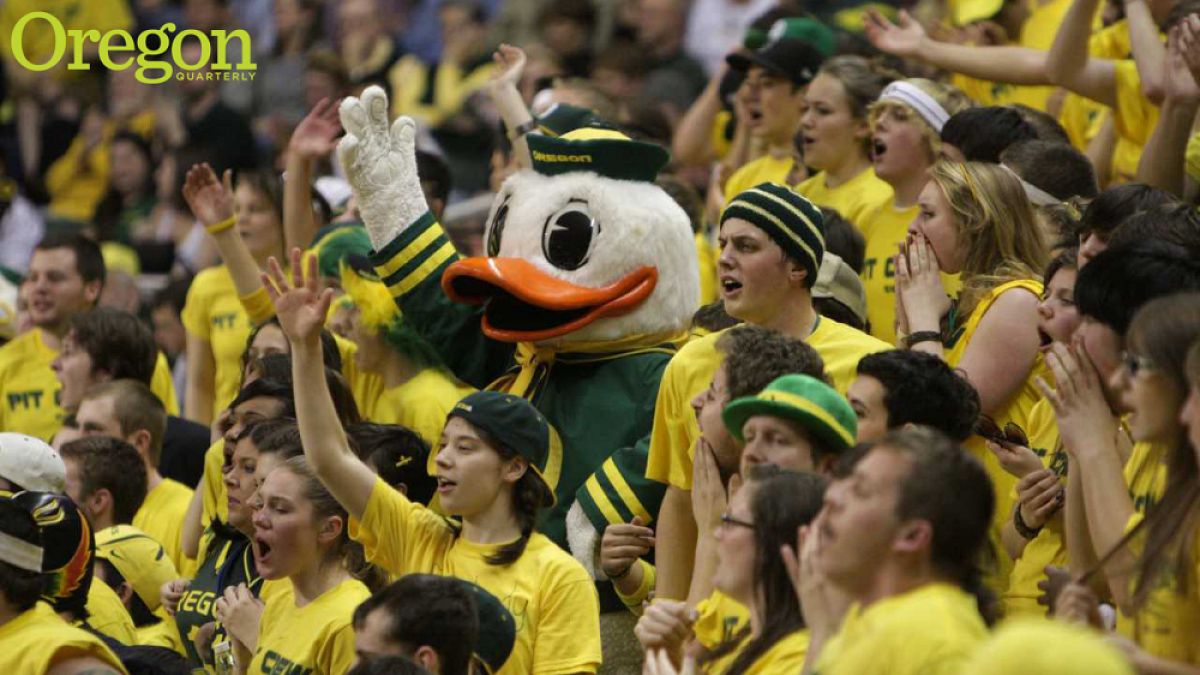The last basketball game will be played at McArthur Court on January 8, 2011, as the Duck women take the court against the University of Washington. Though there is great excitement about the move to the new Matthew Knight Arena, it will still be hard to say goodbye to a classic setting that holds so many memories for UO alumni and community members. To bid farewell to our dear friend—the Igloo, the Pit, Mac Court—Oregon Quarterly offers a sampling of the photographs and text in a fine book published by the UO Department of Intercollegiate Athletics, Mac Court Memories: An Illustrated History of Mac Court, written by Scott Gummer ’86. The UO is still deliberating about the future of Mac Court. If feasible, the building will be reused rather than torn down and replaced. A consultant hired to test the building’s adaptability issued a report last spring that concluded that Mac Court could be used to address some of the projected space needs of the School of Architecture and Allied Arts, if that is the direction the University decides to go.

Webfoot News student newspaper, June 8, 1926
“A new $185,000 basketball pavilion will be finished by October 1926 with an estimated seating capacity of 8,000. The building will form the center for the new physical education group and will be erected on the present military drill field. The financing of the pavilion has been entirely done by the student body with the $5 quarterly building fee. The structure promises to be the last word in auditoriums of the basketball type and is considered by architects to be one of the most modern in the United States. It also accommodates dressing rooms for varsity sports and for visiting teams. One of the features of the pavilion is its ample floor space for two full basketball practice courts and large area for basket shooting.”
* * *
Plans for the arena were moving forward. The commission for the design of the pavilion was awarded to noted architect Ellis Lawrence, and construction commenced in June 1926. Given the building’s rounded white exterior, students took to calling it “the Igloo.” Officially, the university named the arena McArthur Court in honor of Clifton Nesmith McArthur, Oregon’s first student body president, first student director of athletics, and the founding editor of the Oregon Weekly student newspaper.
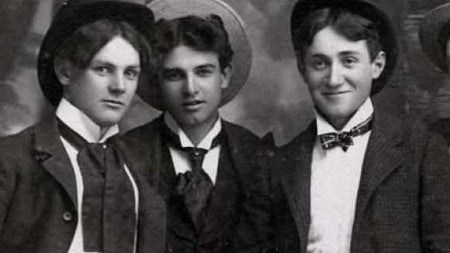
* * *
Charlie Warren, UO basketball, 1959–62
“I have more history than most in Mac Court because my father, John Warren, was the Oregon basketball coach in the 1940s. As a boy, I would shoot around with some of the greats like Jim Loscutoff, plus I was the team water boy, so I got to sit on the bench during games. When I was in junior high, we used to sneak into the gym all the time on weekends to play basketball, and I would imagine I was playing in front of thousands of people—and then I did!
“My best memory is playing Oregon State in the final game of my junior year. Back then, the two rivals played for the Chancellor’s Trophy. The Beavers won it in 1953 and never lost it—until 1961, when I made a basket with one second left to win the game and take the trophy. Mac Court has served us well, but it is time. I am just glad I never had to play here as an opponent.”
* * *
Mac Court got a face-lift before the 1954–55 season. The capacity grew to 10,000, and when Oregon State came to town, a standing-room-only crowd of 10,972 set a new attendance record. [Jim] Loscutoff starred for the Webfoots that season, averaging just under 20 points and a school-record 17.1 rebounds per game. On January 28, 1955, Loscutoff scored 35 points and hauled in 32 rebounds, a school record that stands to this day.
Despite Coach [Bill] Borcher’s reputation as a disciplinarian, Loscutoff was the team’s clown prince. He joined a halftime jump rope exhibition during a game against Idaho, then later, while teammate Howard Page sat on the ball to stall, Loscutoff lay down on the floor next to him, drawing the ire of the Idaho fans.
* * *

“Mac Court has a pulse. You can feel the beat. You can hear the fans stomping when you are down in the locker room—boom! boom! boom!—and then you run upstairs and it hits you—bam! You run out onto the floor and the place is going wild. You feel the adrenaline. You feel the love. It’s hard to put into words; you almost have to have seen and heard and felt it for yourself to truly understand the magic of Mac Court.
“I don’t think that could ever be replicated. Oregon’s new arena will be loud, and the fans will be on top of the action, and it will have its own personality. But the Pit is, and always will be, a one-of-a-kind experience.
“It has been thirty-five years since I last laced ’em up at McArthur Court, but when I walk through the door and the place is packed and ten thousand Duck fans are screaming and yelling, I still feel it. I’m psyched. I’m pumped up. I’m ready to get out there and get after it. All I’d need is a pair of sneakers.”
* * *
Dick Harter, UO men’s basketball coach, 1971–78
“The Pit was a tremendous recruiting advantage. It was known as a place where the fans were off-the-charts loud, loyal, and supportive. When we brought recruits here, they would have to think, ‘My god, I’d love to play in front of people who care that much.’ And we had fans who really cared that much. Each game at Mac Court seemed louder than the last. Who did the fans dislike the most? The Bruins? The Huskies? The Beavers? It was a tie. The fans disliked them all equally.”
* * *
Mac Court hosted an epic upset on February 19, 1966, when the Ducks dumped defending national champion UCLA by a score of 79–72. [Coach Steve] Belko had called it a month before; after [UCLA Coach John] Wooden played his starters into the final minutes of a 32-point blowout in Los Angeles, the Oregon coach went on record stating that UCLA’s tactics could “come back to haunt them.” Before a packed Mac Court, the Ducks earned their first victory over the Bruins since 1950.
* * *
Greg Ballard ’77, UO basketball, 1974–77
“Mac Court is about history and tradition. For me, it represents something that was very classic, not just in Oregon but also around the country, because you never see an arena like this. The ivy on the outside of the building, balconies on the inside that went up and not out, how close the students were, the swinging of the scoreboard when you had 10,000 fans stomping and screaming. Right before you come upstairs from the locker room, you can hear all this yelling and banging from the students and fans getting riled up before the game. And when you take the court, the crescendo of applause is something you just never forget.”
* * *
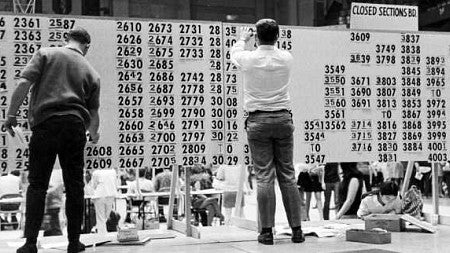
* * *
Terrell Brandon ’90, UO basketball, 1990–91
“Every once in a while, I would be in Mac Court shooting before practice, and I would see students pop their head in; the building was locked, but they’d made their way through a passage that connects Esslinger Hall to Mac Court. Guys would sneak in just to put their foot on the floor. I would invite them in and we would shoot around until I had to tell them they had to go because Coach [Don] Monson was on his way. A couple times I bumped into those guys later on campus and they said, ‘You don’t know me, but you let me play on Mac Court and I just want to say that I really appreciated that.’ I remember it because I know they remember it.”
* * *
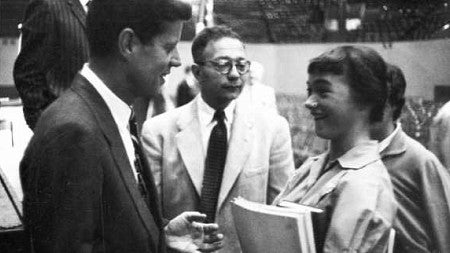
Among the most popular performers were the Grateful Dead, who played Mac Court three times over three decades: in May 1969, January 1978, and August 1981. Tickets to the 1978 show cost $5.50 for students. Nearly 7,500 fans endured sweltering conditions in the summer of 1981, with many revelers dancing right on through the intermission. The band, beloved in Oregon, fittingly ended that show’s final set with “Good Lovin’.”
* * *
While McArthur Court’s history is steeped largely in men’s basketball, the venue has also been the home of a variety of other exceptional University sports teams and athletes, notably women’s basketball. The Ducks have packed the Pit with crowds as large as 9,738, a record set in 1996 when the Ducks delivered a 69–60 victory over Oregon State.
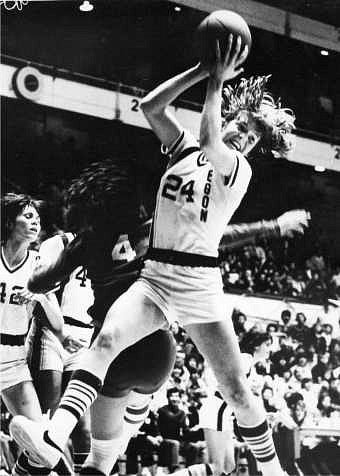
* * *
Aaron Brooks ’07, UO basketball, 2004–07
“Mac Court will always be with me—and not just because I have two of the players’ chairs with the Fighting Duck on them. Other teams may not have enjoyed coming in and playing here; if you did not have heart, the Pit would eat you up. But guys were jealous. They wished they played in Mac Court and got the kind of love and support the Ducks did. I never looked at Mac Court as being old. To me, it was always a classic. There is lots of talk about the new place, but here’s the thing: the fans make the court. Oregon is going to have a great new arena, but it’s already got the greatest fans. And that is the ultimate home court advantage.”
—SG


